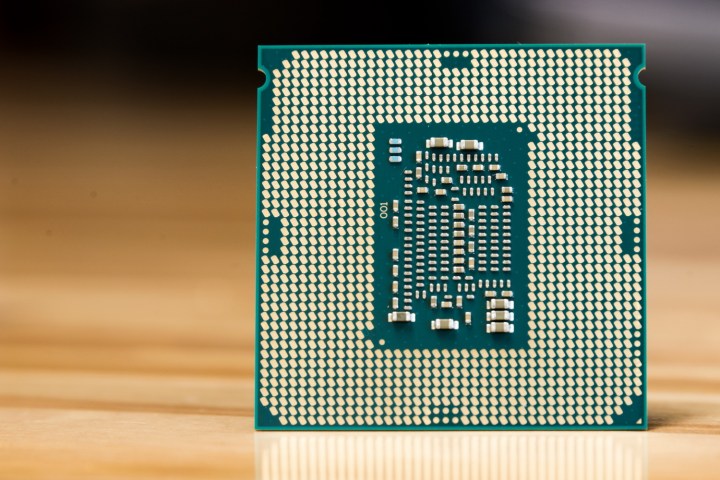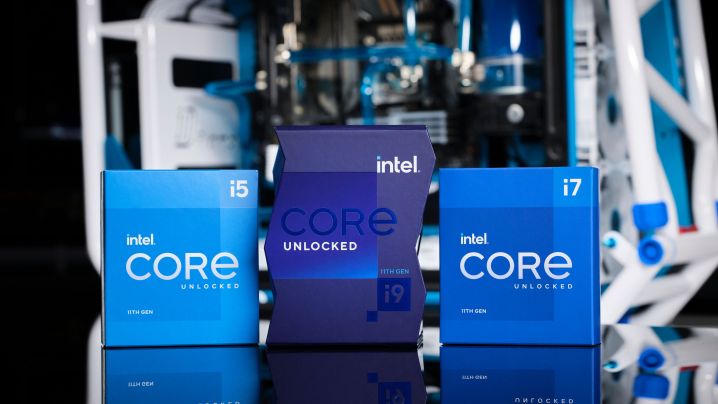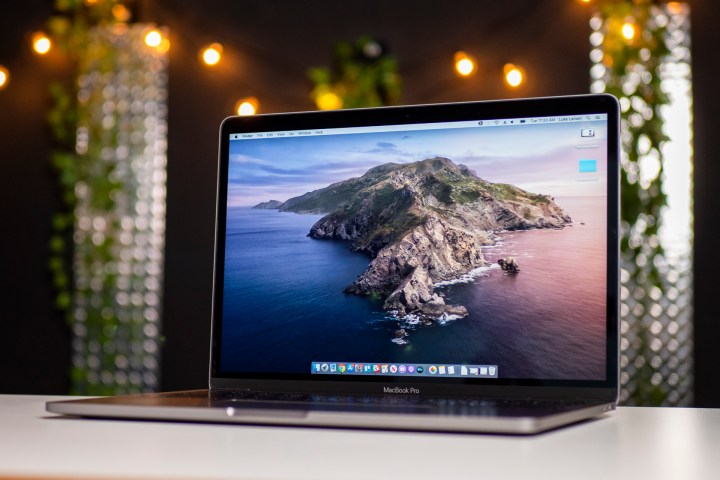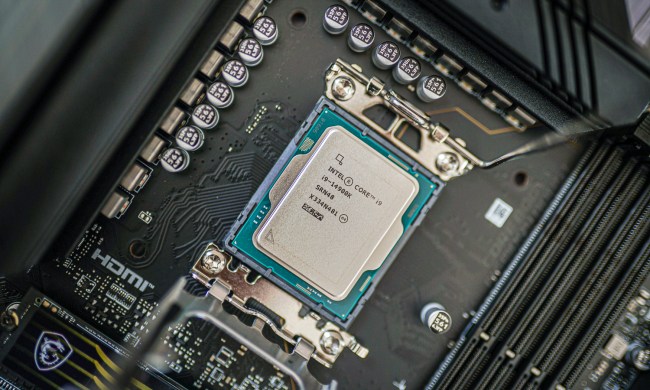Intel’s top two CPU lines are known as Core i7 and Core i9, but other than that mild numerical difference, what does that actually mean in terms of real-world features, performance, and pricing? A higher number generally indicates better performance, but there’s a little more to the story than that.
Intel’s most recent desktop and mobile generations blur the lines between the i9 and i7 markers. To help you decide which is the right CPU for you, we’ve pitted the Intel i7 versus Core i9 to see how much you really get by upgrading.
Related articles
Should you buy a Core i7 or i9?
It depends on what you’re doing, but most users won’t notice much of a difference between an i7 and i9. For the i7, Intel’s new-generation processor is the 11700K. It’s an eight-core CPU with 16 threads that can boost up to 5GHz. Intel pegs its TDP at 125 watts, mirroring last gen’s 10700K. However, like that chip, the 11700K can draw far more power under load.
Intel recently replaced the 10900K with the 11900K, which looks like an odd step back. The newer CPU comes with two fewer cores and four fewer threads, but it maintains a high boost clock.

The current i9 and i7 processors are very similar on desktop, as we’ll get into in the next section. Without a core advantage, the 11900K doesn’t have the same reach that the 10900K did in multithreaded workloads. The 11700K is around $150 cheaper, too, depending on where you look.
For mobile, you have the choice between a newer i7 or an older i9. Intel staggered its last two mobile releases, porting the desktop Comet Lake design to laptops before releasing its 11th-gen Tiger Lake platform. If you’re shopping for a laptop, it’s less about the processor you should choose and more about the laptop’s design. Thin and light laptops top out with 11th-gen i7 processors, while beefy workstations or gaming laptops may feature a Comet Lake i9.
Core i7 vs. Core i9 on desktop

Before diving in, it’s important to define Intel’s CPU naming scheme. We have a full breakdown, but for the purposes of this guide, you only need three suffixes. “K” processors are overclockable, “F” processors lack integrated graphics, and “T” processors draw less power at the cost of clock speed.
Intel’s current Rocket Lake lineup has five i7 processors, but they’re all similar. The 11700K and 11700KF are both unlocked with eight cores and 16 threads, and they have a base clock of 3.6GHz with a single-core boost of up to 5GHz. Below, there’s the 11700 and 11700F. These processors are clocked slightly lower with a base clock of 2.5GHz and a single-core boost of up to 4.9GHz, and they cut the TDP from 125 watts to 65 watts. Finally, there’s the 11700T, which is a power-optimized processor with a TDP of only 35 watts. It can drop as low as 1.4GHz, but can still boost up to 4.6GHz on a single core.
The i9 lineup is almost exactly the same, just with a few differences in clock speed. The 11900K and 11900KF start at 3.5GHz and boost up to 5.3GHz on a single core, while the 11900 and 11900F top out at 5.1GHz at only 65 watts. The 11900T is almost identical to the 11700T, just with a slightly faster boost clock (4.9GHz).
Rocket Lake features a new microarchitecture, but it’s still built on the 14nm process node Intel has been using for years. It’s strange, then, that the 11900K looks like a downgrade compared to the 10900K. Although there are generational improvements, the newer i9 comes with two fewer cores and four fewer threads. On paper, it’s identical to the 11700K outside of clock speed.
We normally recommend i9s for their core advantage in applications that favor a lot of cores. That’s not the case this generation. The 11900K may perform better than the 11700K, but it doesn’t perform $150 better. You’re getting almost identical specs on the 11700K, and with a little overclocking, exactly identical ones. It’s possible Intel will limit the memory controller on the 11700K, though.
Intel’s X-series HEDT CPUs offer up to 18 cores for workstation users, which can be useful for software that can take advantage of greater core counts. They are hard to recommend for anyone else, though, as they are very expensive for what they offer (especially when compared to the AMD competition) and are based on much older CPU technology.
Core i7 vs. Core i9 in laptops
Intel’s most recent CPU releases have all been mobile offerings, from the impressively capable 9th-generation Core i7 and Core i9 chips to the 10nm Ice Lake, 10th-generation CPUs that started shipping in August 2019. The former starts with the six-core, 12-thread Core i7-9750H, which can boost up to 4.5GHz and maxes out with the stupendously powerful Core i9-9980HK, which has a full eight cores and 16 threads, plus a maximum single-core turbo speed of 5.0GHz. These were the first mobile processors with eight cores to be found in relatively thin and light laptops — and from the tests we’ve seen, they’re incredibly powerful in multithreaded performance.

It was the most powerful mainstream mobile processor we’d ever seen, showing up in top configurations for the Dell XPS 15 OLED and MacBook Pro. But more recent Ice Lake processors offer some stiff competition. The top-tier Core i7-1068G7 CPU might not quite reach the same clock speeds (topping out at 4.1GHz on a single core), and it only has four cores and eight threads, but it does so for just 28 watts.
In comparison, the big Core i9 CPUs draw as much as 45 watts. One Core i7 Ice Lake CPU, the 1060G7, can operate with as low a TDP as 9 watts. They also enjoy much more capable, 11th-generation, Intel Iris Plus graphics.
Intel’s latest 11th-generation Tiger Lake mobile processors have a number of improvements over last generation’s, particularly in Adobe applications with artificial intelligence (A.I.) processing and in applications that benefit from improved single-threaded performance. There isn’t an i9 in the Tiger Lake lineup. For i7s, there are three options: The i7-1160G7, i7-1165G7, and i7-1185G7.
These chips all come with four cores and eight threads, with max turbo speeds ranging from 4.4GHz on the 1160G7 to 4.8GHz on the 1185G7. All of these chips, including the i9, come with Intel’s new Xe graphics, too, and although the new tech isn’t as impressive as a discrete GPU, it can still put up reasonable frame rates at medium settings in games like Battlefield V.
Intel also offers Comet Lake processors in a mobile form factor, and that’s where you’ll find the i9s. The i9-10980HK has an extremely impressive boost clock on paper, but with a TDP of 45 watts (up to 65 watts), it’s a hot chip by mobile standards. By contrast, the slowest i7-1160G7 consumes between 7 and 15 watts, while the i7-1185G7 tops out at 28 watts.
To be clear, these are all high-performance chips with a power budget to match. It’s worth noting that the i9 requires significantly more power than the three competing i7s. Even with an impressively high clock speed, standard mobile cooling solutions won’t let you reach it.
Although you will likely find multiple Intel generations while shopping for a laptop, newer is better. Between an i7 and an i9, it depends on what kind of laptop you want. If you want a thin and light laptop, stick with 11th-gen Tiger Lake processors. Although the lineup tops out with a range of i7 processors, they draw far less power than Comet Lake i9 processors, and the onboard graphics are no slouch when it comes to entry-level gaming. On the flip side, if you want a gaming notebook or mobile workstation, you can probably afford the power and thermal requirements of an i9. Regardless, it’s important to read individual laptop reviews rather than rely on specs alone.
What about Core i5 CPUs?
If you won’t use everything the Core i7 or Core i9 offers, you can find something better suited for your needs — and your budget. Intel also offers a variety of more budget-friendly, modest options.
These affordable CPUs are often referred to as Core i5 CPUs, and they offer a majority of the beginner Core i7 CPUs’ performance capabilities for a lot less coin. The Core i5 can even match some of the aspects of the i9’s gaming capabilities if you know how to increase the clock rate of your computer.
Once you’ve reached a $200 or $300 spend, it may be a good idea to start browsing AMD’s Ryzen CPUs. They offer higher core counts and greater all-around performance, especially in multithreaded workloads. The 5000 series CPUs’ single-threaded performance has been upgraded with improvements that make it on par with other Intel cores in gaming computers, too, so don’t rule them out if you’re looking to upgrade your PC or laptop.


